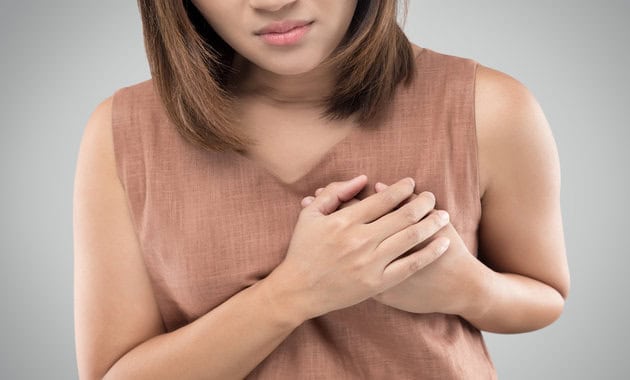
Do you feel a slight twinge of pain in your breasts whenever you jump or try to reach something in a top cabinet or whenever you get a hug? Annoying isn’t it??
This might also become a reason of great concern as you may get dreadful thoughts about Breast Cancer. But do not worry. Breast pain is a quite common problem faced by women at least once during their lifetime and alone it is not usually a sign of Breast cancer.
Breast pain (or mastalgia) is characterized by any feeling of discomfort, pain, or pressure in either of the breasts. These discomforts can become as severe as an intense, ardent pain that radiates throughout the chest and they might interfere with your daily activities. While there are several possible reasons for feeling pain in the breast, the most common one is hormonal imbalance, particularly during puberty, pregnancy, post-partum – including breastfeeding – and menopause.
Mastalgia can also be broadly divided into cyclical and non-cyclical causes. Cyclical mastalgia (breast pain) usually occurs because of hormonal fluctuations and the intensity of pain varies according to the menstrual cycle. On the other hand, non-cyclical mastalgia usually occurs because of musculoskeletal causes and the pain persists all throughout the month.
Cyclical Breast pain:
1) is more common and usually occurs about five days prior to the start of your period
2) it usually subsides after periods start
3) it usually resolves in women when they hit menopause
On the other hand, Non-cyclical Breast pain:
1) is less frequent than cyclical
2) has a shorter duration of symptoms
3) usually affects one side and 50 percent of the pain tends to subside spontaneously
How to diagnose Breast pain?
For the correct diagnosis and management of breast pain, it is important for the doctor to know certain points regarding the pain like:
1) duration of pain
2) location – restricted to one point or spread over the entire breast
3) intensity of pain
4) fluctuation in intensity of pain over a few days
5) Radiation of the pain – is the pain running to some other site from the breast
6) Is there a lump associated with the pain? Usually, breast cancer does not lead to pain in the initial phases
7) what makes the pain better
8) what makes the pain worse
These facts along with clinical examination and an ultrasound/ mammography help the doctor in determining the cause of breast pain. The above-mentioned points can easily be maintained in a “Pain diary”.
You can use this diary to record your pain and what you did to ease it each day. This will help your health care team understand your pain better.
This information will help your doctor in:
1) Assessing the cause of pain
2) Judging the response to therapy
So the next time you visit your doctor with complaints of breast pain, make sure you maintain a ‘Pain diary’ so that your treatment can proceed smoothly.
To conclude,
As mentioned above, pain isn’t usually a sign of breast cancer but it’s better to talk to your doctor to rule out if anything serious. If your breast pain is sudden and accompanied by severe chest pain and numbness in your extremities, seek immediate medical attention. These symptoms can indicate a heart attack.
Finding the cure starts with awareness, so be aware and listen to your breasts.
**Consult India’s best doctors here***